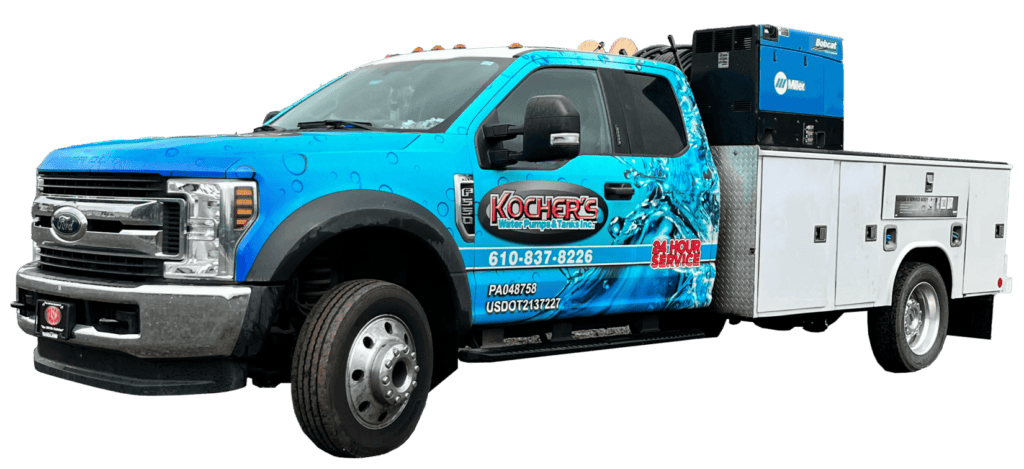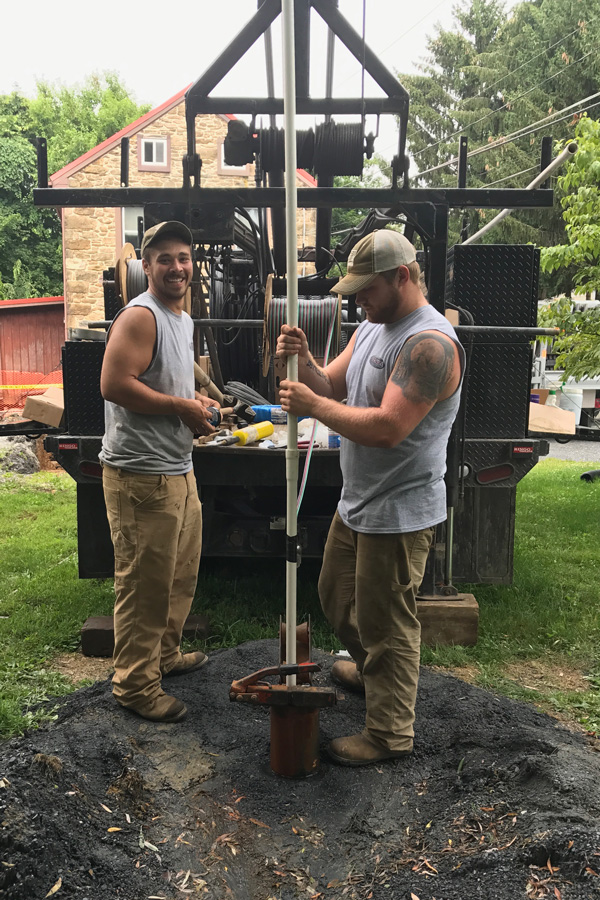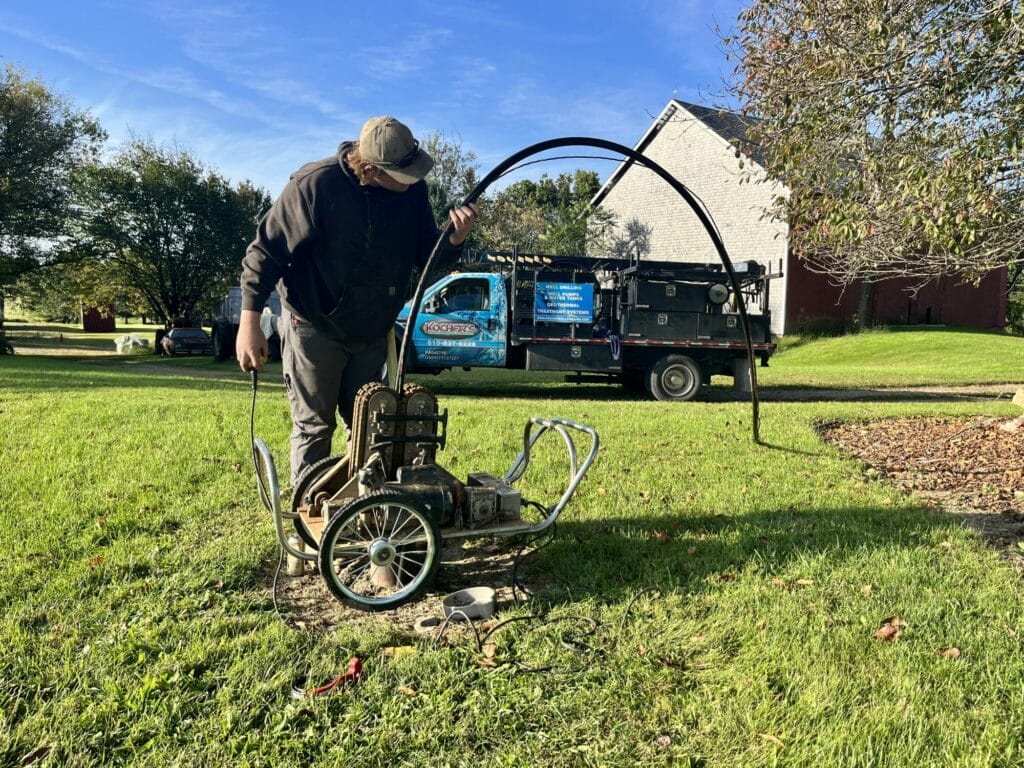
Investing in well drilling is crucial for your home’s water supply system’s health, longevity, and efficiency. Professional drilling contractors like us at Kocher’s specialize in creating wells that provide a private, reliable, and clean water source.
💧 Choose Kocher’s for Comprehensive Water Solutions 💧
Don’t compromise on your residential water needs. We offer an array of services, from drilling irrigation wells to providing advanced water treatment options. Secure your water supply with top-notch expertise. Contact us or call 610-837-8226 today.
We proudly stand as a trusted provider of well drilling and water conditioning services in Pennsylvania. Our extensive service area embraces several regions, including Effort, Bangor, Nazareth, Saylorsburg, Mount Bethel, New Tripoli, Hellertown, Williams Township, Allentown, Bethlehem, Easton, Brodheadsville, Schnecksville, Quakertown, Kutztown, Pocono, Stroudsburg, Lehighton, Wind Gap, and the entire Lehigh Valley area. Trust Kocher’s for a reliable, efficient, and safe water supply.
The journey to securing a reliable source of groundwater begins with careful planning. Here’s what’s involved:
Here’s a step-by-step look at the well drilling process, which is essential for harnessing groundwater:
"*" indicates required fields

Once the drilling is complete, here’s how we ensure your well is up to standard:
Professional well drilling is vital to setting up a reliable water supply system. It requires a deep understanding of geological surveys, construction details, and the ability to pick the best location for the well.
Professional drillers provide:
Selecting the right partner for drilling your own well is crucial. Kocher’s is a reliable choice for navigating the complexities of well drilling, from private drinking water wells to larger commercial projects.
Our decades of experience in both groundwater exploration and well construction ensure that your well is efficiently and safely drilled. We're familiar with local geological conditions, including the water table and specific drilling requirements, providing optimal water yield.
We prioritize understanding your needs, offering free, personalized consultations to align with your expectations. Kocher helps you navigate legal and environmental aspects, such as securing permits from the local health department and ensuring proper well construction.
Our advanced drilling techniques, including the use of precise drill bits, are vital in locating the ideal spot for your well. We focus on accuracy to tap into the water table effectively, ensuring your private water supply is dependable and abundant.
We understand the importance of clear financial planning. Our transparent pricing provides upfront cost estimates for your project, ensuring clarity and helping you avoid unexpected expenses in building your own well.
When you choose Kocher’s Services, you’re not just getting a hole in the ground; you’re receiving a comprehensive, transparent cost breakdown for your well drilling project. Here’s what we cover:
At Kocher’s, we pride ourselves on offering a cost-effective and efficient well drilling service. Our commitment to quality and customer service has made us a trusted name in the PA region.


After drilling your well, Kocher’s commitment to your water supply continues. Our services extend beyond just drilled wells and well locations. We ensure the longevity of your investment with regular maintenance and testing of water levels and quality, maintaining the efficiency and functionality of your well system over time.
For your residential water needs, choose Kocher’s expertise. Our services range from drilling wells, even in challenging locations, to advanced water treatment and conditioning. We’re equipped to handle larger water demands, suitable for different water districts. Our well casing and systems are designed for durability and to prevent collapse, offering you a lasting solution.
Kocher’s has been a trusted name in the PA region for years, providing comprehensive, reliable services beyond drilling. Secure a safe, efficient water supply with us. Contact Kocher’s Geo & Well Drilling Services today for a dependable water solution.
Replacement costs vary, influenced by factors such as the pump repair’s complexity and the well casing’s condition. Professional drilling services are crucial for avoiding collapse and maintaining a clean water supply.
Signs of a problem include fluctuating water pressure, dirty water, and unusual noises from the pump. A drilling company can promptly repair these issues to prevent more significant problems.
Well drilling provides a reliable and clean water source independent from the public water supply. It’s cost-effective and gives homeowners control over their water quality.




Kocher’s Water Pumps & Tanks Inc.
2786 W Beersville Rd
Bath, PA 18014
Office: (610) 837-8226
Fax: (610) 837-5021
Kocher’s Water Pumps & Tanks is a fourth generation family owned business. Located in Bath Pa, we proudly serve Allentown, Bethlehem, Easton, the Poconos and all surronding areas.
– 24 Hour Emergency Service
– Free Water Analysis
– Serving all Makes and Models
– Residential & Commercial
– Well Water Specialists